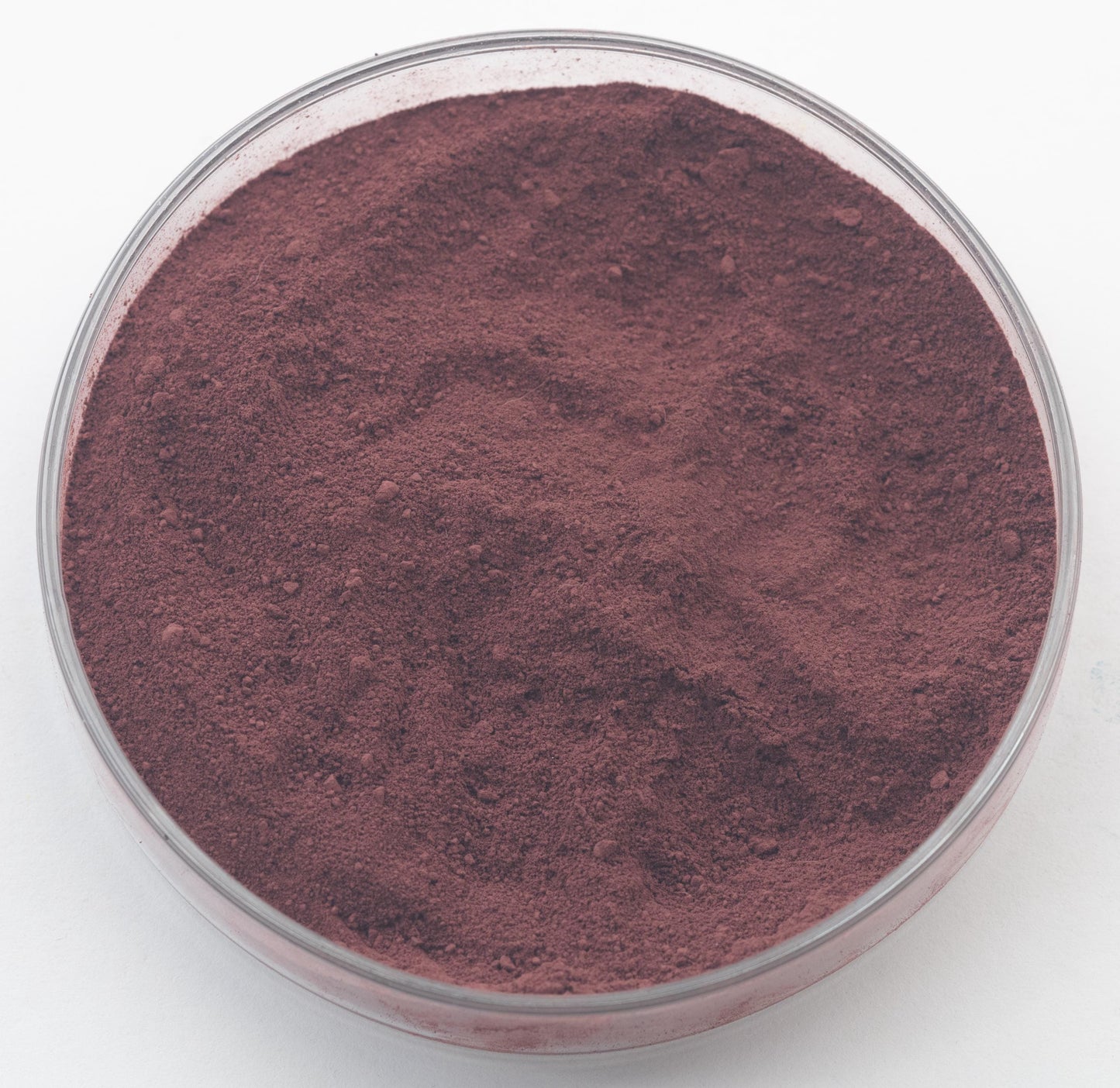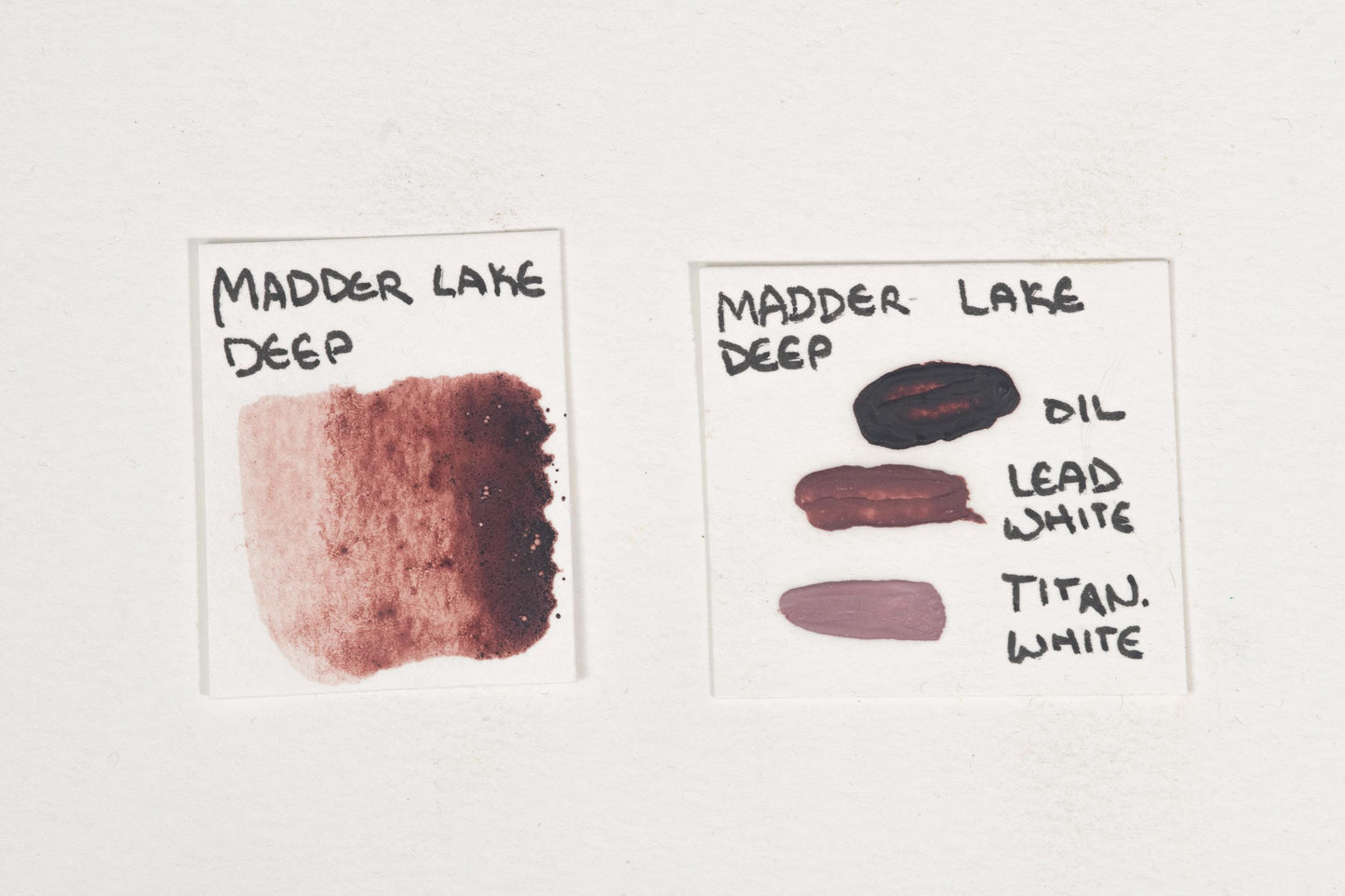Madder Deep Lake
Madder Deep Lake
Couldn't load pickup availability
Share



Description
Madder Lake Deep is a handmade single pigment made through a historical process. The pigment distinguishes itself over other plant lakes by good lightfastness, on account of which it occupies an esteemed position in dyeing and color-making. Morrow Archival Madder Lake Deep is made through recycling the ultra-fine pigment left over from spent madder dye vats, and reprocessing it into a rich and luxurious red pigment.
Madder lake is a highly transparent pigment, making it ideal for glazing and layering techniques. Renowned for its warm, rich hues — ranging from delicate pinks to deep reds — it has been a favorite among artists for centuries. While natural madder offers unmatched depth and complexity due to its unique blend of organic colorants like purpurin, it is less lightfast than some modern reds and may fade over time. Unlike synthetic alizarin, which lacks the same richness, natural madder continues to be valued for its luminous, historical beauty.
History
Madder, derived from the roots of Rubia tinctorum, has been a prized red dye for centuries. Used in ancient Egypt as early as 1500 BC, it became a staple in Greek and Roman textiles.
During the Middle Ages, its cultivation spread across Europe, particularly in France and the Netherlands by the 13th century. The dye produced a spectrum of reds, from soft pinks to deep crimsons, depending on the mordants used. In the pictured artwork 'Saint Catherine of Alexandria' by Raphael, Madder Lake is used in the red drapery of the saint in combination with Carmine Lake.
By the 17th century, artists like Johannes Vermeer used madder lake to create luminous reds. In The Girl with the Wine Glass, he layered madder over vermilion to enhance the richness of the red skirt.
The 19th century brought change when chemists isolated alizarin, madder’s key pigment, leading to synthetic production in 1868. This made dyes more affordable and consistent, reducing reliance on natural madder.
Despite this shift, natural madder remains valued by artists and traditional textile makers for its unique depth and complexity, preserving its legacy in color history.
Health and Safety
Precautions:
Keep out of reach of children and pets.
Do not consume.
Not for cosmetic or food usage.
Do not spray apply.
For further health information contact a poison control center.
Use care when handling dry pigments and avoid dust formation.
Use particular caution with fibrous, fine, or toxic pigments.
Do not eat, drink, or smoke near dry pigments. Avoid breathing in pigment dust and use a NIOSH-certified dust respirator with sufficient rating for dry pigment.
Wash hands immediately after use or handling.
If dust is likely, always wear protective clothing to keep out of eyes, lungs, off skin, and out of any contact as well as keep area ventilated.
This product may contain chemicals known by the State of California to cause cancer, birth defects, or reproductive harm.
Warnings and bottle information are abbreviated.
Pigment Information
Pigment Type: Natural (lake process) from plants (Rubia tinctorium)
Suitable Mediums: Watercolor, Oil, Tempera, Acrylic
Lightfastness: Good
Opacity: High translucence
Other Names: Rose Madder Lake, Madder root extract, Natural Alizarin, Rubia tinctorium lake, dyer's madder, rose madder
Color Index Code: NR9
Image: 'Saint Catherine of Alexandria' by Raphael from the National Gallery



